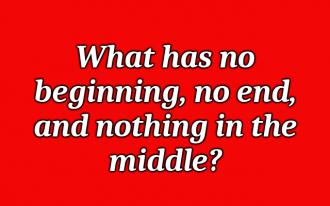What has no beginning, no en...
Brain Teasers
[3449] What has no beginning, no en... - What has no beginning, no end, and nothing in the middle? - #brainteasers #riddles - Correct Answers: 79 - The first user who solved this task is Allen Wager

2017-01-19

